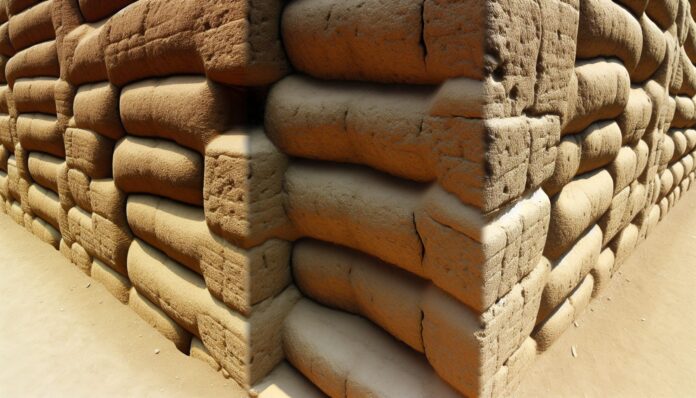In a groundbreaking fusion of architecture, sustainability, and additive manufacturing, a team of researchers has developed 3D printed interlocking earthen bricks designed to create microclimates that support tree growth in arid environments. This innovative approach not only redefines how we think about building materials but also offers a promising solution to combat desertification and climate change.
3D Printing with Earth: A Sustainable Approach
The project, titled Microclimate Canopy, was developed by a team from the Institute for Advanced Architecture of Catalonia (IAAC). The structure is composed of 3D printed earthen bricks that interlock without the need for mortar. These bricks are made from locally sourced soil, making the project both sustainable and cost-effective. The use of earth as a printing material reduces the carbon footprint typically associated with concrete or synthetic materials.
Each brick is uniquely designed to serve a specific function—some are optimized for water retention, others for airflow, and some for shading. When assembled, the bricks form a canopy-like structure that creates a microclimate underneath, ideal for nurturing young trees in otherwise inhospitable environments.
How the Microclimate Canopy Works
The Microclimate Canopy is more than just a shelter; it’s a carefully engineered ecosystem. The interlocking bricks are designed to channel rainwater and dew into the soil, while their porous surfaces help retain moisture. The structure also provides shade, reducing soil evaporation and protecting saplings from harsh sunlight.
Additionally, the canopy’s geometry promotes natural ventilation, which helps regulate temperature and humidity levels beneath the structure. This combination of passive environmental controls creates a nurturing environment for tree growth, even in arid or semi-arid regions.
Applications in Reforestation and Urban Greening
This technology has far-reaching implications for reforestation efforts and urban greening projects. In regions facing desertification, such as parts of Africa, the Middle East, and Australia, the Microclimate Canopy could serve as a scalable solution to restore vegetation. By creating favorable conditions for tree growth, these structures can help stabilize soil, improve biodiversity, and even influence local weather patterns over time.
In urban settings, the canopies could be used to green rooftops, courtyards, or abandoned lots, contributing to urban cooling and improved air quality. Their modular design allows for easy assembly and disassembly, making them adaptable to various environments and needs.
The Role of Additive Manufacturing in Environmental Design
This project exemplifies the growing role of additive manufacturing in sustainable architecture and environmental design. 3D printing allows for precise control over material distribution and structural geometry, enabling the creation of complex forms that would be difficult or impossible to achieve with traditional construction methods.
Moreover, the use of local materials reduces transportation emissions and supports circular economy principles. As 3D printing technology continues to evolve, we can expect to see more applications that blend ecological awareness with architectural innovation.
The Microclimate Canopy is a compelling example of how 3D printing can be leveraged not just for efficiency or aesthetics, but for ecological impact. By rethinking the building block itself, the IAAC team has opened new possibilities for sustainable development in some of the world’s most challenging environments.
Source: 3DPrint.com

